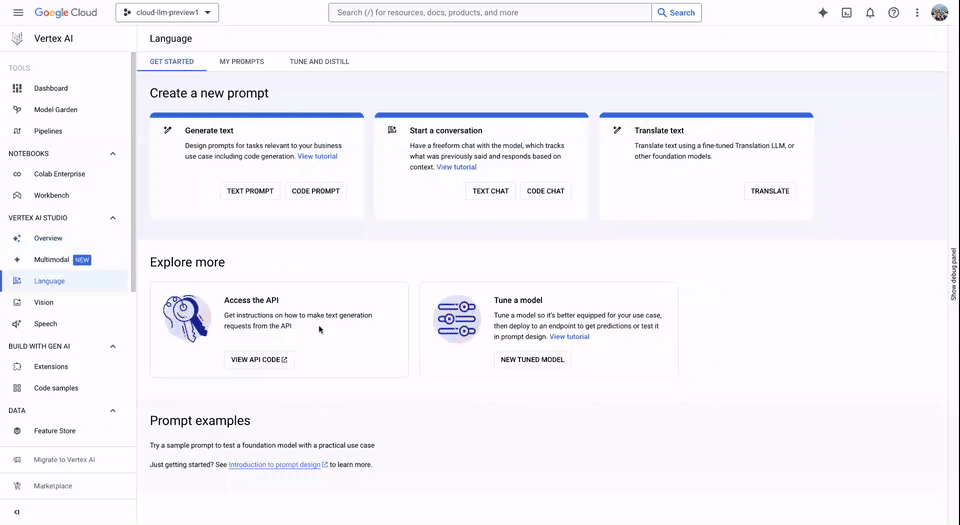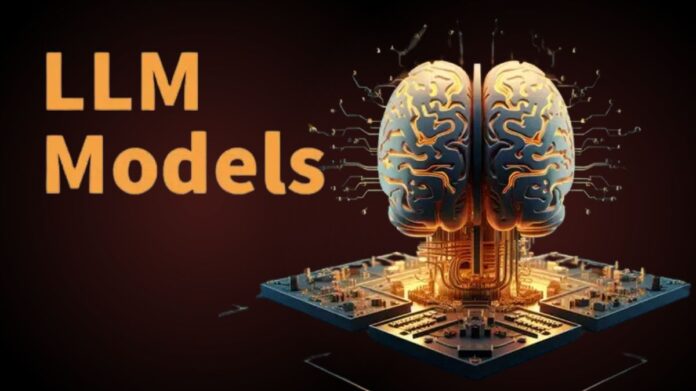Generative AI Studio
Language translation is one of the most useful AI Studio use cases, and it is extensively used by both businesses and organizations. In an effort to increase content accessibility for workers, clients, communities, and the general public, businesses from Canva to Bloomberg have jumped on the bandwagon of automatic multilingual translation. Google has been producing groundbreaking work, including numerous developments in AI translation, since releasing the transformer architecture in 2017. This design underpins today’s large language models, or LLMs. Google Cloud is happy to introduce in this blog post a new generative model for Google Cloud Translation API as well as a summary of other recent developments that are assisting companies in utilising AI to expedite translation use cases.
A generative AI model specifically designed for translations is introduced by Translation API
With the most recent enhancement to Google Cloud’s Translation AI Studio offering, users of the Translation API now have the option to select between Google Cloud’s new Translation LLM and its old machine translation model (also known as NMT). The Translation LLM is a highly suitable tool for translating paragraphs and articles, having been refined over millions of translation source and destination segments. NMT might still be the best option for brief text exchanges and chat sessions, low-latency interactions, or use cases where language control and consistency are crucial.
Real-time translation that is more adaptable thanks to generative AI
Adaptive Translation is an integrated approach that was released to GA on Translation API Advanced in February 2024. It functions in tandem with the Translation LLM that is specific to Google Cloud. Customers input a small dataset of translated examples (as little as five or as much as 30,000) together with the text to be translated when they request an adaptive translation. Each translation request is given a refined context by the API, which uses an algorithm to choose the best instances, which is subsequently passed to the LLM during inference. Customers now have a quick and simple way to optimise translation outputs in real-time to better meet style requirements and use cases.
In April, Smartling, an AI-powered translation platform, co-presented a session on generative AI and responsive translation at Google Cloud Next ’24. Smartling released Google Adaptive Translation benchmarks for nine languages and several verticals. The results showed that, with a quality gain of up to 23%, Google Adaptive Translation outperformed Google Translate.
Adding Google Adaptive Translation to Google Cloud’s portfolio of engines is crucial to Smartling’s translation and AI strategy owing to its easily customisable, dynamic, and significant quality improvement. In contrast to other all purpose LLMs, Google Cloud Adaptive Translation excels at translating content. The best performance cost tradeoff makes it an appealing solution, and it works particularly well for clients with limited data who are starting their localization journey, expanding into new markets, or trying to reduce content drift.
Using AI Studio for translation
Do you want to test your material on several models at once? With the addition of Google Cloud Specialised Translation LLM, Google Cloud now offers translation in AI Studio, making it quick and simple to test translations using Gemini, or Google Traditional translation models.

Studio AI
Quality improvements above conventional translation models for Hindi, Chinese, Japanese, and German:
Silently updating models for thirty language pairings in 2023, Google Cloud achieved quality improvements along the way. Starting on April 1, 2024, users of translation APIs will automatically receive the newest model refreshes for German, Japanese, Hindi, and Chinese from Google Cloud. Strong quality gains and a large reduction in MQM errors across four languages are achieved by the translation model updates for Google’s pretrained general translation models, also known as NMT. Enabling context retention for many sentences, often known as the context window, can greatly enhance the accuracy and flow of a paragraph.
Which model ought you to select?
In order to obtain high quality translation across hundreds of languages with little delay, is it worth investing in specialised models? Alternatively, even at the expense of throughput, should you choose general-purpose large language models like Gemini to take advantage of the long context window or low cost? Although generative models are orders of magnitude slower than traditional translation models in terms of throughput, they are still very useful for content generation, editing, summarization, and question-answer use cases. As a result, executing extensive translation workflows on them can cause a significant delay in delivery time. On the other hand, conventional translation models are typically rigid for context-based real-time output customisation and translate sentences by sentences.
The good news is that Vertex AI Studio on Google Cloud has everything you need to find the ideal fit, however ultimately it will depend on your specific goals and use case. Customers can select the ideal model to match their use case, language, domain, and workflow by using the Vertex AI Studio platform’s model choice, global availability, and scale features.


